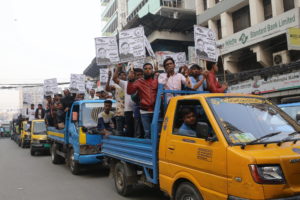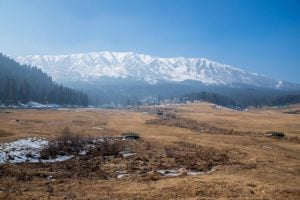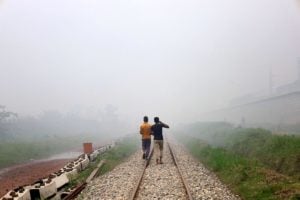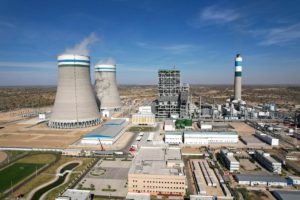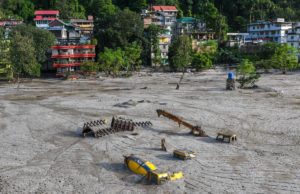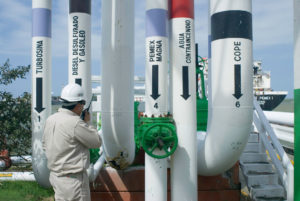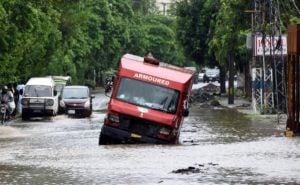South Asia has five elections this year, with two already concluded in Bangladesh on January 7 and Bhutan on January 9. Pakistan goes to the polls on February 8, while India is expected to do so in April or May and Sri Lanka sometime before September.
These elections do little to inspire hope for climate action, as prominent candidates often prioritise policies that exacerbate rather than mitigate climate change. Campaigns are dominated by non-climate issues, reflecting the limited importance accorded to climate concerns by major political parties and the wider public. The silver lining is the potential for these elections to generate momentum for climate justice.
Polluting priorities: from infrastructure to imports
Sheikh Hasina won her fourth straight term in Bangladesh. Nawaz Sharif, a three-time former prime minister, is favoured to triumph in Pakistan. And Narendra Modi is widely expected to return for a third consecutive term. All three share a commitment to large infrastructure projects. In recent months, Hasina has inaugurated South Asia’s first underwater tunnel, a mammoth bridge, and an overground Metro service and elevated expressway in the capital Dhaka. Sharif and his party have long emphasised the importance of big development projects, especially transport infrastructure that includes massive road initiatives and public transit, along with power projects. Modi has pursued infrastructure projects at a rapid pace.
Such projects are crucial for the region’s growing economies and populations, but they pose a significant environmental challenge. Infrastructure development, is deeply primarily reliant on materials like steel and cement, both of which contribute substantially to carbon emissions. Public transit initiatives championed by like Hasina and Sharif may reduce car usage, and thus cut emissions, but the sheer scale and quantity of these undertakings often undermine their emissions-reducing goals.
Another shared priority among leaders is the pursuit of dirty fuel imports, mainly but not exclusively from the Middle East. The World Bank estimates a 50% increase in energy demand between 2000 and 2020, compelling South Asian leaders to rely on their longstanding dependence, despite high financial and environmental costs. Additionally, they embrace other polluting energy fixes — Modi and Sharif have focussed heavily on domestic coal production and Hasina on indigenous natural gas.
On the brighter side, Bhutan’s newly elected prime minister, Tshering Tobgay, presided over remarkably climate-friendly governance when he was premier between 2013 and 2018, marked by forest preservation, clean energy projects targeting the poor and biodiversity protection within its ecosystem. But Bhutan’s small size and economy limit the positive knock-on effects of these greening efforts across the wider region.
Climate’s conspicuous absence on the campaign trail
All five South Asian countries holding elections this year are grappling with economic hardship, marked by rampant inflation, energy shortages, and high unemployment. Politics in Pakistan, Bangladesh, and India are mired in hyper-partisanship, with Pakistan facing its most severe wave of terrorist attacks in a decade.
Predictably, any talk of climate action is practically non-existent on the campaign trail, and the campaigns themselves involve emission-heavy vehicles transporting people to election rallies and substantial energy consumption of campaign technologies, such as sound systems. The electoral candidates, though, are undoubtedly aware that South Asia is among the world’s most climate-vulnerable regions. That silence, though, does not bode well for future climate action.
The misleading Modi exception
Some may single out Modi’s India as an exception. Indeed, he has made ambitious decarbonisation pledges, announced new national strategies to develop clean fuels, provided generous incentives to clean energy investors and commissioned massive clean energy infrastructure projects. Modi understands the imperative of climate action, as do other leaders, including Sri Lankan President Ranil Wickremesinghe, who recently announced new climate plans.
However, the bigger picture reveals challenges. As I previously wrote for The Third Pole, dirty habits die hard. Coal still dominates India’s energy mix, with the industry producing it so rapidly that the Indian Coal Minister announced that the country intends to start exporting it by 2026. India’s carbon tax rates are among the world’s lowest, and many companies may simply swallow the costs without ramping up renewables. Climate action trendlines over a likely third Modi term are not as sanguine as his supporters may suggest.
The silver lining of climate justice—with a caveat
Despite low visibility in elections, climate justice remains an important issue of the region’s leaders. Modi’s foreign policy prioritises advocating for the Global South, urging rich states to better assist poorer countries in fighting climate change. Bhutan’s Tobgay, who coined the term “carbon negative” to describe his country’s rare feat of offsetting more carbon than it emits, is a passionate advocate for developing countries facing acute climate risks.
Post-elections, South Asia will have leaders committed to fighting for loss and damage and other climate aid for the developing world. This is a rare issue on which most of the main political parties in the region agree, meaning South Asian leaders will speak with one voice at UN climate summits. At COP 27 in 2022, Pakistan’s government, then led by the party poised for success in this year’s election, chaired the G77 bloc that successfully negotiated a new loss and damage fund. Although, it has to be said that India has not exactly gone out of its way to support and praise Pakistan for its statements and actions related to climate change.
The risk, however, is that in their zeal to push rich states to help the poor with climate challenges, South Asian leaders double down on the position that “we’ll pollute because you did”. Driven by a desire to showcase his Global South leadership credentials, Modi may amplify this position during his likely third term, potentially influencing other South Asian leaders. This may, though, be complicated by China, which also sees itself as a leader of the developing world and is the top supplier of foreign infrastructure assistance in South Asia.
A missing message about a crucial climate connection
The missing message in South Asia’s 2024 elections is that the governments in the region have a compelling rationale to go greener: increased climate action can alleviate economic strain, a pressing regional challenge.
Shifting towards a greener economy can generate jobs and thereby address persistent unemployment. Committing to developing more clean energy infrastructure can attract essential foreign investment. And finding alternatives to costly fossil fuel imports can ease debt crises.
This is not a message being articulated on South Asian campaign trails this year, but it really should be.
